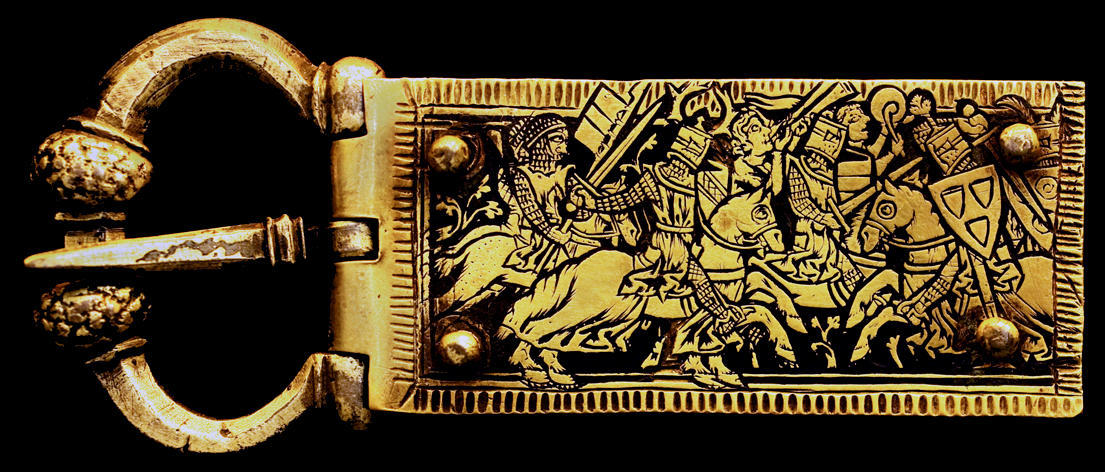Buckle with Knights from Kígyóspuszta, Hungary, 13th century

Buckle with fighting knights from Kígyóspuszta (Hungary), gold and niello, 13th c., Hungarian National Museum.
Source: Kornbluth Photography

Referenced on p317-318, Arms and Armour of the Crusading Era, 1050-1350, Western Europe and the Crusader States by David Nicolle.
864 Gold mounts of a sword-belt, Hungary, 13th century (National Museum, Budapest, Hungary)
A-F - engraved gold plate attached to the buckle; G - part of the belt showing buckle, engraved plate, one decorative stud and one stiffener-fastening eyelet.
This magnificent sword-belt is not only interesting in its own right,
but it also provides one of the most detailed pictures of 13th-century Hungarian warriors from the new feudalised aristocracy.
There seem to be no representatives of the traditional semi-nomadic Magyar way of life on this piece of metalwork
even though some sections of Hungarian society apparently clung to these old ways. However, three fully-armoured knights are shown (B, D and F).
They wear flat-topped great helms, two with large crests.
They have long-sleeved mail hauberks, probably with integral coifs, as does a fourth unhelmeted figure (A).
The goldsmith seems to indicate that their mittens are of a different substance (A, B, D and F),
and although these might be of padded or leather construction the distinction between mittens
and sleeves is probably merely a result of the artist trying to avoid visual confusion.
Mail chausses are worn (B, D and F), perhaps beneath padded or leather cuisses for the thighs and knees.
Shields are relatively small, flat-topped, and kite-shaped, supported by guiges.
Two of the three swords are clearly tapering (D and F), while the third, though pointed, has more parallel sides.
The pommels may be round (B and F), while one seems to be diamond-shaped (D).
Two horses have caparisons or bards (B and F). In the background are a trumpeter and a drummer.
The presence of the latter may be a survival from the Magyars' past, as war-drums were a typical feature of almost all Turco-Mongol and other armies from the steppes.
See also: Seal of King-junior Stephen of Eastern Hungary, as a Hungarian Knight, 1263
Illustrations of Hungarian Costume & Soldiers
13th Century Illustrations of Costume & Soldiers

